I graduated from college with a degree in art, so when I took up boatbuilding a few years later the transition came naturally. There is something quite sculptural about hulls and oars, spars and sails. Joe Greenley of Redfish Kayaks has doubtless made the same connection. While he is well known for his artistry with strip-building, the kayaks he has designed are more than canvases for designs in red cedar, mahogany, walnut and Alaska yellow cedar. They’re good kayaks. Joe’s Spring Run is a general-purpose kayak with an overall length of 16′9″, a waterline length of 14′10″, and a beam of 23-7/8″ and 22-1/2″ at the waterline. It weighs an easy-to-shoulder 36 lbs. The cove-and-bead strips are 3/16″ x 5/8″, slightly smaller than the more commonly used 1/4″ x 3/4″ strips, which may account for the more refined look of all Redfish kayaks.
The strips are applied without staples, leaving the kayak free of trout-speckle bands that would spoil the aesthetics. The fits between strips are tight enough that the glue lines are invisible, and the strips are placed in the same order they were cut from the stock, making it look as though construction was from broad panels cut from a single board. The exterior is ’glassed, but you’d be hard-pressed to find any evidence of it. The interior is finished with ‘glass cloth as well, transparent but with its weave’s texture left proud. The bulkheads are cedar-strip panels, ’glassed in place.
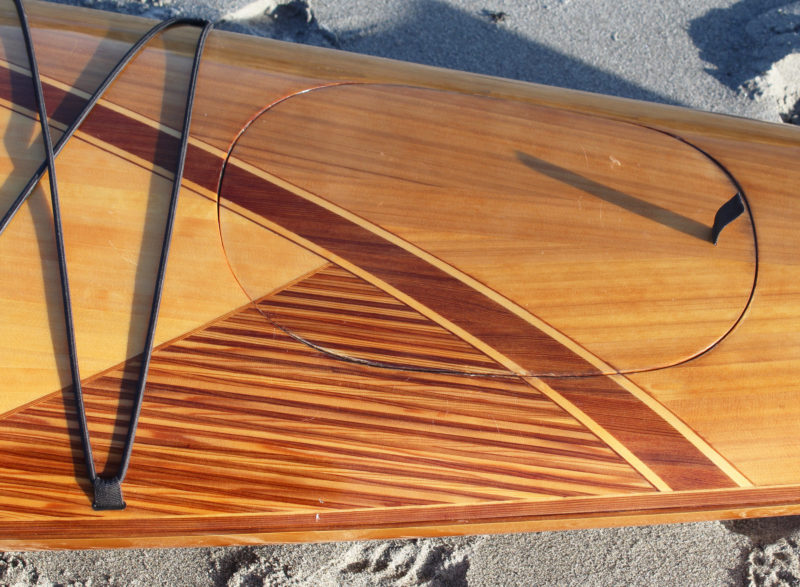 Christopher Cunningham
Christopher CunninghamA webbing tab is all that’s needed to release the hatch cover. The webbing deck-line anchor (lower left) is strong and unobtrusive.
The deck bungees are anchored with discreet webbing loops set in neat ovals of black epoxy. They’re much less obtrusive than plastic pad-eyes, and they’re easy on the limbs when crawling over the deck during self-rescues. The hatch covers have nothing crossing over them to hold them in place. There is only a webbing tab on each cover to remove it. The Spring Run I paddled had an earlier version of the closure system, which employed cleats on the underside of the lid and bungees to hold the lids tight. The latest models of Redfish kayaks use neodymium rare-earth magnets to pull the covers tight against a perimeter gasket to create a tight seal.
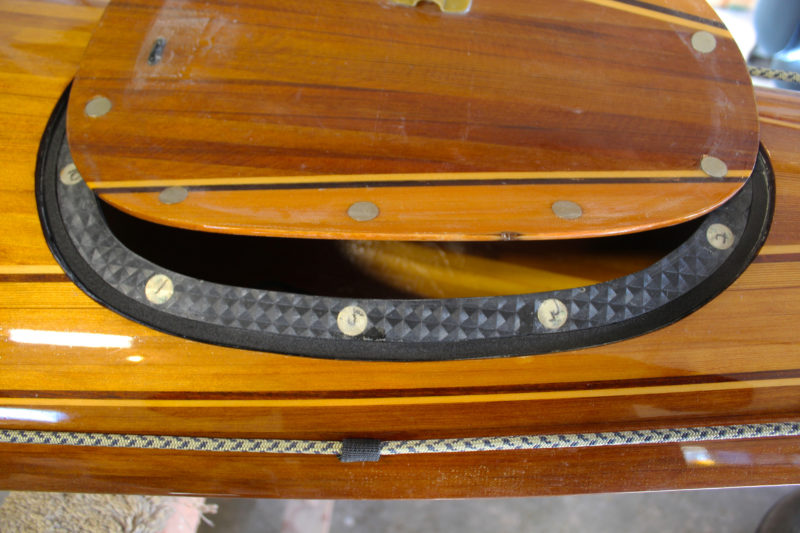 Christopher Cunningham
Christopher CunninghamThe hatch covers are held down with magnets that are powerful enough to keep the covers in place and create a watertight seal against the neoprene gasket.
The cockpit is just barely long enough for me to drop into seat and then bring my feet in. I’m 6′ tall; it’s more practical for me to sit on the aft deck and slide in feet-first.
The seat is far from an off-the-shelf, one-size-fits-all model. It’s removable, sculpted from closed-cell foam, and includes hip bracing and a backrest. There’s an integral foam pillar at the back of the seat that is cut slightly taller than the space for it under the aft deck. Compressing the pillar while pushing it under the deck locks the seat in place. The hip braces are also oversized; a hard push locks them in place when they curve up the inner sides of the cockpit. The seat showed no signs of slipping out of place during all the rolls and wet exits I did.
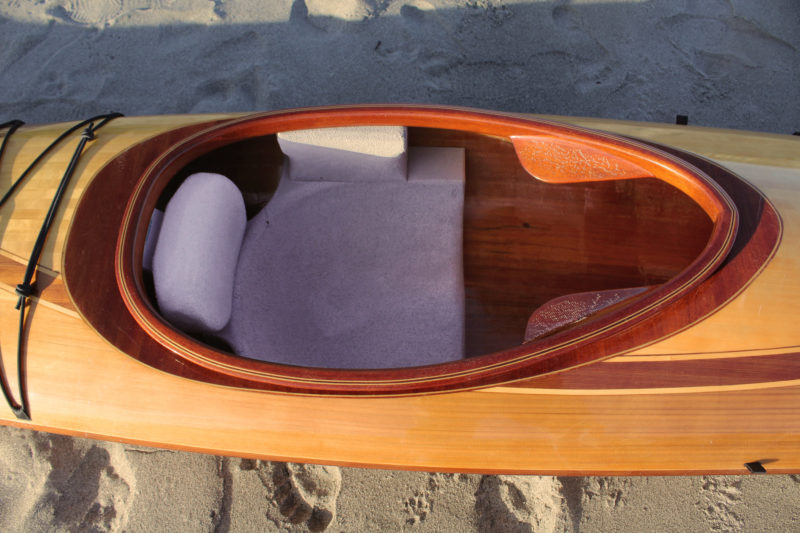 Christopher Cunningham
Christopher CunninghamThe carved closed-cell foam seat is very comfortable and assures a solid, non-slip connection with the kayak.
The foam also offers excellent insulation from the cold, providing a comforting, toasty warmth. Additionally, the volume of foam in the seat limits how much water can get into the cockpit in the event of a capsize or wet exit and provides a substantial amount of flotation. Its carved surfaces have a slightly fuzzy texture that contributes to the solid connection with the kayak. The combination of the deep contours and the grippy texture provides excellent support and comfort for the long haul, and effortless control of the kayak when it’s necessary.
The foot braces are the standard Keepers model, solid and easily adjusted. The thigh braces are mahogany flanges incorporated in the cockpit coaming. They have no padding, but I didn’t feel the need for any.
The primary stability is very good. I could sit comfortably with my hands off the paddle and fiddle with the GPS while taking notes without feeling the least bit twitchy. The secondary stability is solid, providing reassuring resistance that makes it easy to hold the kayak on edge for more effective turning.
The hull tracks well, and I had no trouble holding on course, regardless of speed. It also has very good maneuverability when I set the hull on edge to lift the ends to offer less resistance to the lateral motion in a turn. Sweep strokes brought the bow around and once the hull started carving, it maintained the turning between strokes.
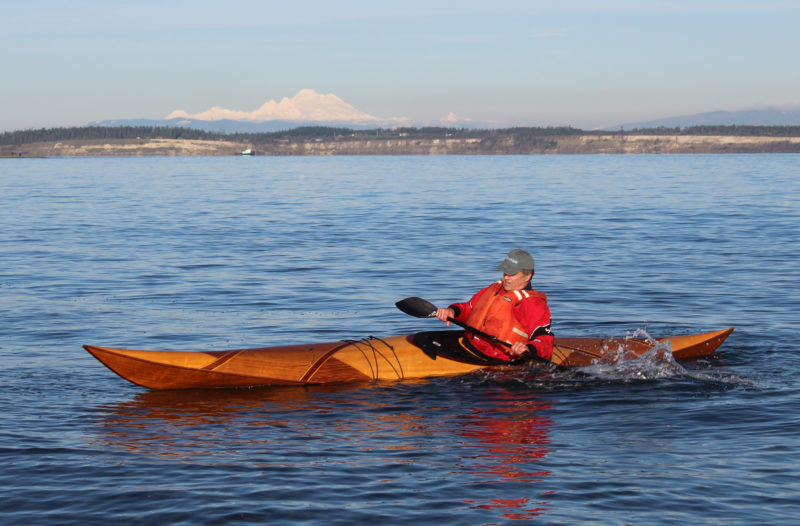 Ed Emswiler
Ed EmswilerThe Spring Run’s good secondary stability supports edging maneuvers.
The Spring Run has a fine, overhanging stern—not the sort of configuration that takes well to supporting a rudder, and it’s just as well, as there’s more than enough maneuverability without an added appendage spoiling the look of the kayak and adding little to its performance. There was no wind during the afternoon I had the Spring Run out on the water, so I can’t comment on weathercocking, though the kayak’s good response to edging and sweep strokes should make it easy to counter a moderate degree of weathercocking, if any were to occur.
At a relaxed pace I could easily maintain 4-1/4 knots, GPS measured in still water—a brisk cruising pace. With a bit more effort, but still at a sustainable aerobic pace, the Spring Run held 5-1/2 knots, and in an all-out sprint I could push the kayak to a peak of 6-1/2 knots. For a waterline of just under 15’, those are good numbers. At top speed the Spring Run maintained its trim and I never felt I was pushing it uphill.
The secure fit in the cockpit provided by the seat and the thigh, hip, and foot braces made rolling the Spring Run a snap. My hips stayed centered and my thighs stayed locked in, so when I snapped my hips the hull snapped around too. The softness of the foam and the gentle contours of the thigh braces meant I could roll without feeling any pressure points on my legs.
My self-rescue drills with the Spring Run went well. After capsizing, I had no trouble getting out of the cockpit during wet exits. In kayaks with a looser fit and a larger cockpit opening, I might fall out without having to do anything to exit, but with the Spring Run I had to move my knees to the center of the cockpit to get clear of the thigh braces and then push the back of the coaming past my hips. Then, even with the snug, form-fitting shape of the seat, it was not at all difficult to slip out.
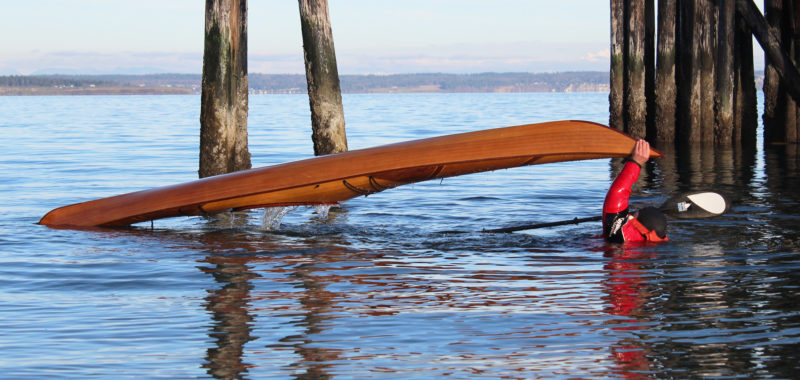 Ed Emswiler
Ed EmswilerThe kayak’s light weight makes is easy to lift the bow and drain the water that gets into the cockpit during a wet exit.
After a wet exit, the bow was light enough to lift easily with one hand so I could let the water drain from the cockpit and then roll the kayak upright. To re-enter, I could pull myself up and onto the aft deck. There’s a bit of height there, good for cargo space in the aft compartment, but that adds to the effort required to get aboard, chest down on the deck. But with a good kick and a strong pull, I got aboard with the first effort. Moving aft a bit will force the stern down, which can help if you’re having trouble. After straddling the aft deck and bracing with my paddle extended to one side, I scooted forward and dropped into the seat. It was a tight squeeze getting my legs in—with size-13 feet it may take a bit more effort for me than for others—but I was able to get both legs in and locked back under the thigh braces. This maneuver is commonly done with a float on one blade of the paddle and the other blade tucked under the deck lines, but the Spring Run had enough stability for me to hold the outrigged paddle by hand and brace without the float.
The reenter-and-roll self-rescue was a cinch. Holding the kayak floating on edge and leaning it slightly toward me, I could easily thread my legs into the cockpit, pull my backside into the seat, and, locked in once again, roll upright. That maneuver, of course, scoops up a bit of water because the cockpit opening isn’t covered by the spray skirt. But not so much water got aboard that the kayak felt unstable. The foam seat can take some credit for that.
The particular Spring Run I paddled was 20 years old and has served as a demo boat for much of its life. It isn’t as shiny as a new Redfish kayak, but otherwise, it seemed no worse for the wear. Even the bottom was unscarred. The ’glass and cedar have proved to be quite durable.
The Spring Run is a lively performer as a day boat, has enough stability for fishing and photography, and has enough cargo space for multi-day cruising. When you’re not out paddling it, the fine workmanship and the decorative touches make it something you might want to hang in your living room.![]()
Christopher Cunningham is the editor of Small Boats Monthly.
Spring Run Particulars
[table]
Length/16′9″
Waterline length/14′10″
Beam/23.9″
Waterline beam/22.5″
Weight/36 lbs
[/table]
The Spring Run is available from Redfish Kayaks as plans ($85), a kit ($1695), a DIY workshop at Redfish in Port Townsend, Washington ($900 to $4,500), and as finished kayak (starting at $8,000).
Is there a boat you’d like to know more about? Have you built one that you think other Small Boats Monthly readers would enjoy? Please email us!
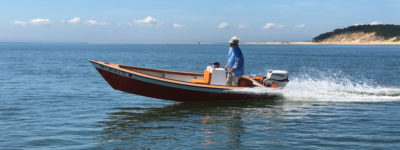
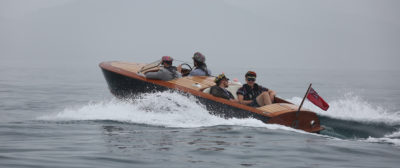
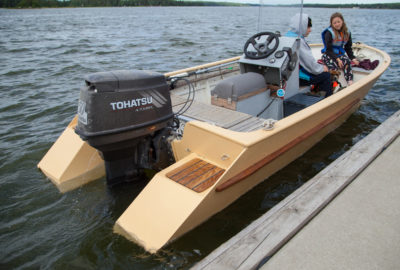
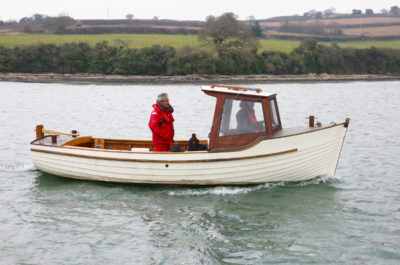
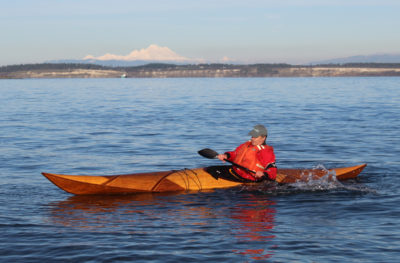
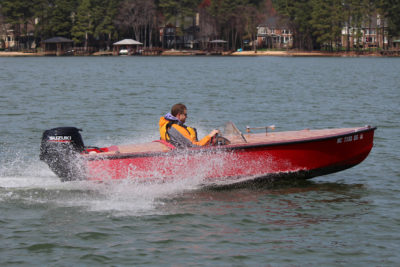
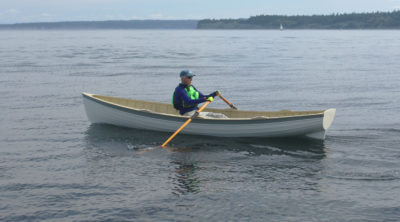
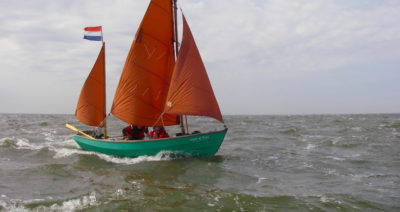
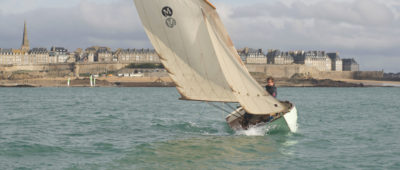
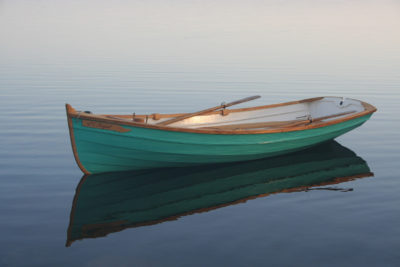
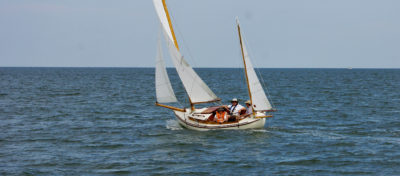
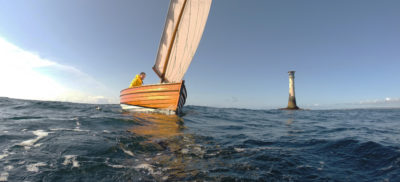
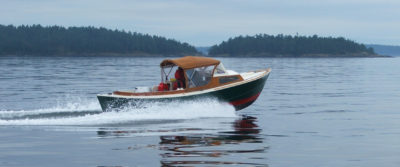

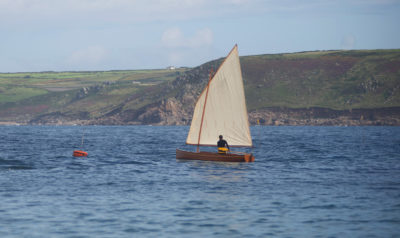
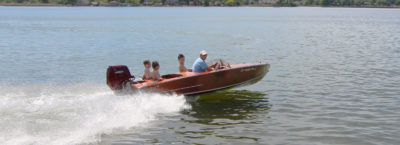
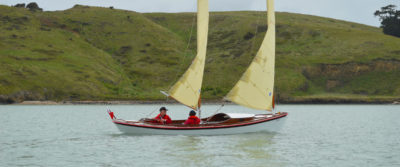
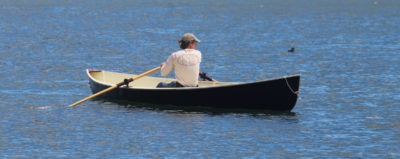
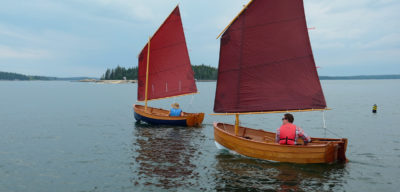
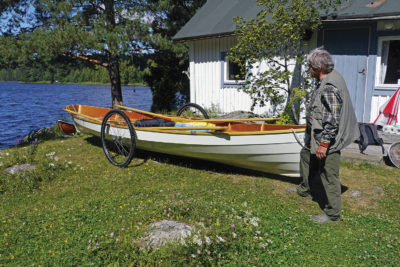

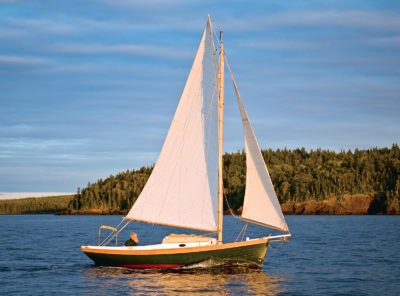
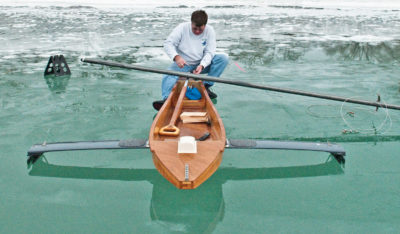
Join The Conversation
We welcome your comments about this article. If you’d like to include a photo or a video with your comment, please email the file or link.